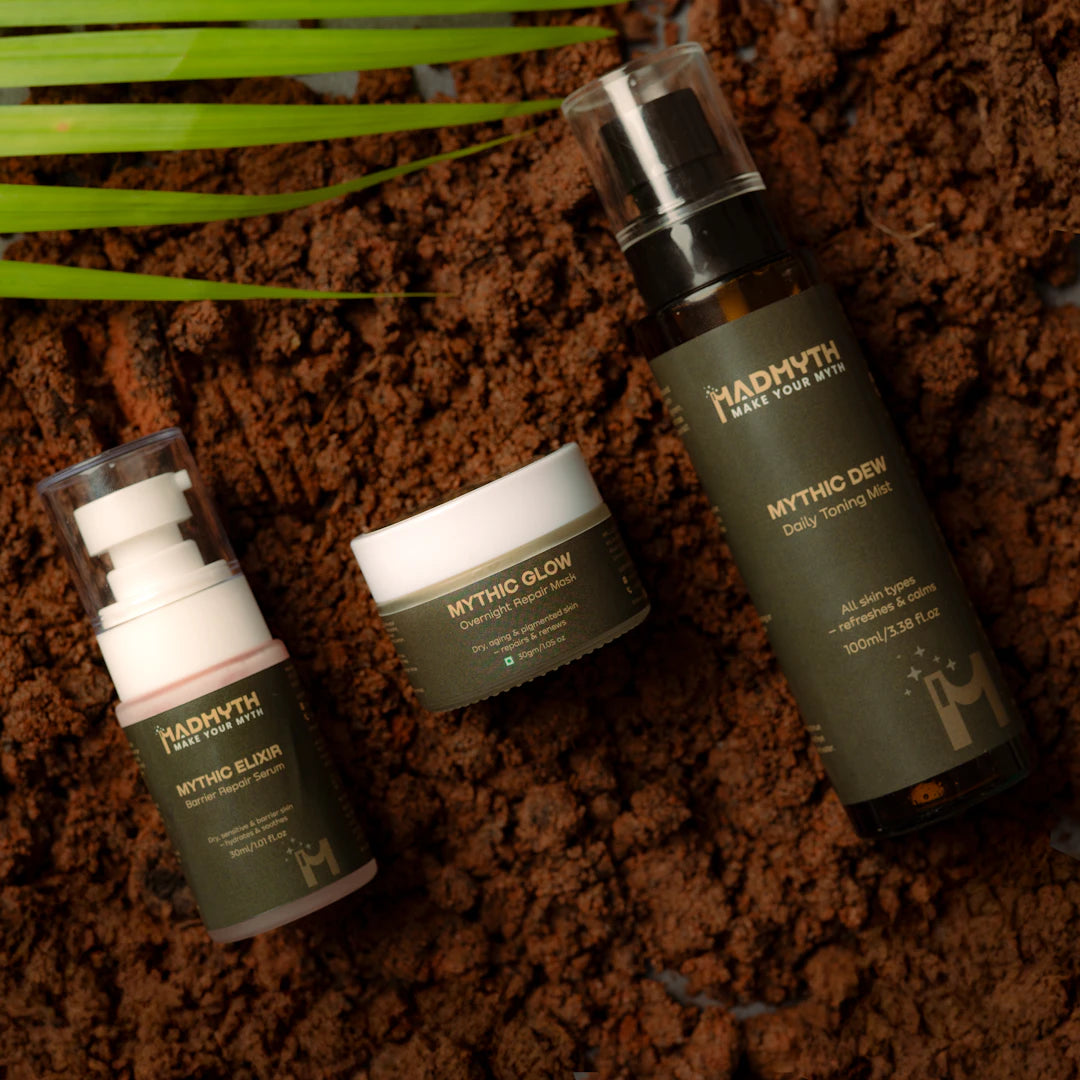Mastering Skin Care Labels: A Comprehensive Guide

Overview
Understanding skin care labels is crucial for selecting the right products for your skin type. This guide explains how to read ingredient lists, decode common terms, and recognize effective active ingredients. It emphasizes the importance of pH balance, proper storage, and customizing products to your skin's needs while debunking common skincare myths. By being informed, you can make better choices for healthy skin.
Frequently Asked Questions
1. Why is understanding skin care labels important?
2. What are active ingredients in skin care products?
3. How can I effectively read the ingredient list on a label?
4. What should I consider regarding expiration dates and product storage?
5. How can I determine my skin type and choose the right products?
In today's world of endless skin care products, understanding how to read skin care labels is crucial for maintaining a healthy complexion. With terms like "collagen booster" and "anti-wrinkles" becoming commonplace, it’s essential to know exactly what these labels mean and how they can affect your skin. This guide will help you navigate through ingredients, claims, and much more—so you can make informed choices for your skin.
Why Understanding Skin Care Labels is Essential
When it comes to skin care, one size does not fit all. Each individual has unique skin types and concerns, which means that what works for one person may not work for another. Reading labels carefully can empower you to select products tailored to your specific needs. Here are a few reasons why you should invest time in learning how to read skin care labels:
- Identify ingredients that are effective for your skin type.
- Avoid harmful or irritating ingredients.
- Make informed choices about product efficacy and safety.
- Understand marketing claims to avoid falling for “hype.”
Decoding Common Skin Care Terms
Many brands use terminology to appeal to customers and communicate effectiveness, but not all terms are created equal. Understanding what these terms mean can help you determine if the product is right for you.
Active Ingredients
Active ingredients are the focal points of most skin care products. These are the substances in the formulation that yield specific results. When scanning labels, pay close attention to the active ingredients that address your concerns such as:
- Hyaluronic Acid: A hydration hero that can hold up to 1000 times its weight in water.
- Retinol: A derivative of Vitamin A that is known for its anti-wrinkle properties.
- Chemical Exfoliators: AHAs and BHAs that help in cell turnover and brightening the skin.
Product Claims
Terms like "collagen booster" or "anti-wrinkles" are often found on the packaging of skin care products, but it's important to verify these claims. Here’s what to consider:
- Look for supporting evidence: Brands that can back their claims with clinical studies are more trustworthy.
- Understand common marketing tactics: Terms like "dermatologist-tested" don't necessarily mean the product is effective for everyone.
Ingredient List: The Nitty-Gritty
Beyond marketing jargon, the ingredient list on a label is where the real information lies. The FDA requires ingredients to be listed in descending order by weight. This means that if a product's first ingredient is water, it contains more water than any other ingredient by weight.
Reading the Ingredient List
Here are some tips for effectively reading the ingredient list:
- First five ingredients matter most: These are the primary active elements that can significantly impact your skin.
- Avoid harmful irritants: Steer clear of parabens, sulfates, and synthetic fragrances if your skin tends to be reactive.
- Be wary of too many additives: If it sounds more like a chemical experiment than a skincare regime, it might be worth skipping.
Natural vs. Synthetic Ingredients
Many consumers are leaning toward natural ingredients for their perceived safety and effectiveness. However, synthetic ingredients can be just as effective. Here is how to differentiate:
- Natural Ingredients: Often derived from plants or minerals; examples include coconut oil, aloe vera, and fruit extracts.
- Synthetic Ingredients: Man-made substances that can offer targeted results; examples include peptides, silicones, and certain antioxidants.
The Importance of pH Balance
Your skin’s pH balance is integral to overall skin health. Most healthy skin has a slightly acidic pH ranging from 4.5 to 5.5. Products outside this range can disrupt the skin barrier, leading to irritation and breakouts.
Adjusting pH Levels
Many products do not specify their pH levels, but you can use a pH test strip to evaluate them at home. For example:
- Look for toners and cleansers that specify they maintain a balanced pH.
- Acidic products (like AHAs or certain peels) can temporarily upset the pH but can be beneficial in moderation.
Understanding Expiration Dates and Storage
Another critical aspect of reading skin care labels is understanding how long a product will remain effective. Most products will have an expiration date or a Period After Opening (PAO) symbol. This is particularly important when considering the efficacy of anti-wrinkle products or collagen boosters, as they may lose potency over time.
Best Practices for Storage
Making sure your products maintain their efficacy includes proper storage:
- Keep items in a cool, dark place away from direct sunlight to avoid degradation.
- Seal products tightly after use to prevent contamination.
Customization for Your Skin Type
Knowing your skin type—oily, dry, combination, or sensitive—can greatly influence the products you select. Here’s how to identify which ingredients work for your skin:
Oily Skin
If your skin tends to be greasy and prone to breakouts, look for:
- Non-comedogenic products that don’t clog pores.
- Lightweight textures, such as gels and serums.
- Ingredients like salicylic acid and tea tree oil.
Dry Skin
For dry skin types, your primary goal is hydration. Seek out products with:
- Heavy moisturizers and creams that emphasize hydration.
- Ingredients like hyaluronic acid and glycerin for moisture retention.
- Oils and rich butters such as shea butter or jojoba oil that nourish the skin.
Finding the Balance: Gauging Your Skin’s Reaction
After identifying the right product labels, it's crucial to pay attention to how your skin reacts to them. Even the best labels can’t guarantee results. Monitor your skin for signs of irritation or improvement over time.
Logging Your Skin Journey
Maintaining a skin care journal can help you track products and their effectiveness as well as adverse reactions. Consider the following:
- Document the products you use along with dates.
- Note any changes in your skin's appearance or texture.
- Keep an eye on your skin's response over days or weeks to establish a clearer picture of what works best.
Unveiling the Skincare Myths
As with many topics, there are several myths surrounding skin care that could alter your understanding. Here are a few prevalent myths demystified:
Myth #1: More is Always Better
Many people believe that using more product will yield better results. However, this can lead to clogged pores and irritation. A small amount of product is usually sufficient.
Myth #2: Expensive Products are Always Superior
Cost does not necessarily correlate to effectiveness. Often, reasonably priced products can outperform luxury brands. Always examine the ingredient list for value.
Join the Journey Toward Healthy Skin!
By taking the time to read skin care labels carefully, you’ll be equipped with the knowledge to navigate the complex world of skin care products. You can confidently explore options like collagen boosters or anti-wrinkle products tailored to your unique skin type and needs. Don’t let marketing jargon mislead you; instead, empower yourself with reliable information and take control of your skin care journey! Happy label reading!
Linked Product

Micro Serum
The Micro Serum is designed to enhance skin’s firmness and elasticity while improving overall tone and texture. With its high concentration of Proprietary Peptides, it targets multiple signs of aging, making it suitable for those seeking to support their skin's natural rejuvenation process. This serum can be easily incorporated into your daily skincare routine for a more youthful appearance.
View Product

